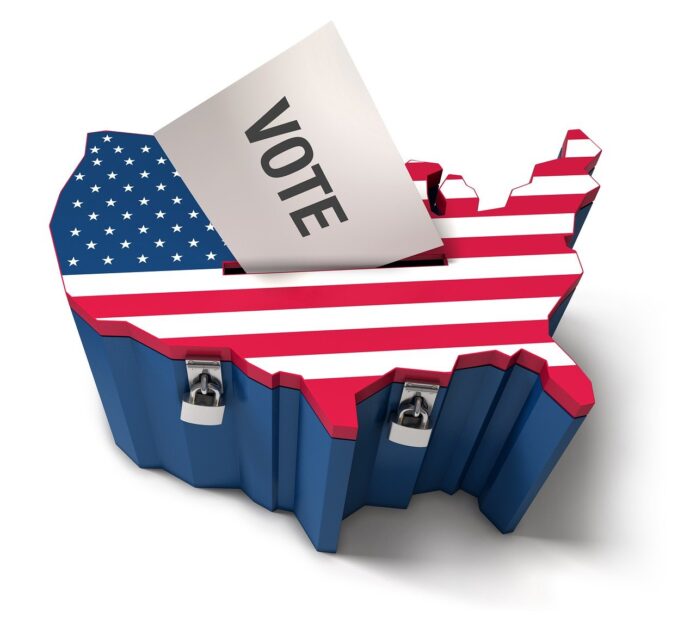In California, ballots will be mailed by Tuesday night, but the results of many races could take several days, even weeks, to finalize. This is a familiar waiting game unique to the state, triggering public scrutiny and debate when major races or hot-button issues are at stake.
However, the delay is largely tied to the fact that the majority of the state’s 22 million registered voters cast mail-in ballots – necessitating a comprehensive review process that goes beyond simply tallying votes through machines.
In California, this means verifying each mail-in ballot through a series of steps, including signature verification and ensuring that voters haven’t submitted another ballot elsewhere.
If a signature doesn’t match the one on file, as is often the case with people accidentally signing using characters from a foreign language, county officials need to contact the voter to rectify it.
The state also counts ballots arriving late as long as they are postmarked by the correct date and received within seven days. While many other states have a one-week window for counting mail-in ballots, California law allows for 30 days.
Paul Mitchell, vice president of Political Data Inc., remarked, “It always takes longer than you think because it just does.”
Mitchell noted that the news media and political pundits have unfairly criticized voters when they focus too much on how long results take. This can fuel conspiracy theories, especially when a candidate appears to be ahead on election night but ultimately loses after all mail-in ballots are counted.
“You’ve got this mix of two issues,” he said. “In this dynamic scenario, two pivotal elements hold sway, each carrying its weighty consequences. Let’s unravel the intricate interplay and explore the intriguing outcomes they may yield. One revolves around the time it takes for the entire voting process to unfold. The other, a phenomenon observed across the nation, concerns whether there’s a tendency for a “blue shift” or a “red shift” in the voting outcomes. Let’s delve into each of these intriguing aspects.
California’s election process – and the history of candidates making premature claims after initial returns – could lead to delays in race calls by news outlets this year and potentially hinder campaigns from conceding on election night. This could be the case with the Senate race featuring three Democratic incumbents and former baseball star Steve Garvey, a leading Republican candidate.
Mail-in voting surged in popularity in the past decade but has become standardized in recent years. In November 2020, the COVID-19 pandemic prompted election officials to send every active registered voter in California a ballot, which could be returned by mail or dropped off at collection sites, replacing traditional polling places.
Now, over 90% of votes in California come through the mail, often requiring thorough scrutiny.
Ryan Ronco, president of the California Association of Clerks and Election Officials, stated, “There are more stray marks on them, more improvements made by voters, which can create challenges in smoothly operating the voting apparatus.”
“For example, a person could vote incorrectly and then cross it out and write, ‘Not this one – I mean this one,'” he said. “All those ballots will have to go through a separate process to make sure we count the voter’s intent.”
There’s also the issue of procrastination. Voters wait until the last day to mail their ballots, resulting in a significant backlog.
By Monday, the Los Angeles County Registrar-Recorder’s Office had received nearly 573,000 mail-in ballots. The county has 5.7 million registered voters and utilizes a former Fry’s Electronics store spanning 144,000 square feet as its ballot processing center.
The spokesperson for the Registrar-Recorder’s Office, Mike Sanchez, emphasized the agency’s efforts to encourage voters to avoid waiting until Election Day. “However, throughout our history, it’s become evident that this is a common trend among voters,” he remarked..
Bob Page, the county’s voter registrar, stated that Orange County officials recently invested $4 million in equipment to scan barcodes and capture signatures. “We wanted the capacity to process more efficiently at one time, which will logically speed up the process,” he said. “But even if we receive 500,000 ballots on Election Day, it will still take time.”
According to the National Conference of State Legislatures, California is one of eight states that fully allows elections by mail. California tested mail-in ballot elections in select counties before the pandemic and expanded statewide permanently after achieving record-high voter turnout percentages in November 2020.
Previously, Republicans had raised questions about California’s process after Democrats gained significant votes in the 2018 congressional race, as election offices took weeks to process ballots post-Election Day. No fraud was found. In 2020, former President Donald J. Trump cast doubt on mail-in ballot elections, discouraging other Republicans from supporting a statewide perspective.
Kim Alexander of the California Voter Foundation, a nonpartisan group seeking to improve the voting process, said that despite the security of elections in the state, there is a need to expedite the counting of votes. “Perceptions matter; seeing fluctuating results makes folks uneasy, hinting at potential irregularities. It’s about trust in the process, fostering confidence in election integrity amid uncertainty.”
She said that waiting so long to hear results wasn’t helpful for voters or candidates, and the process also narrowed the available window for recounts.
However, Ms. Alexander said that some counties, especially in rural areas where there’s less assistance, heavily rely on allotted days for counting votes. She said that California’s current method has provided several unsuccessful provisions to ensure voters that they won’t be left behind.
“These compromises are part of the delicate balancing act within the electoral system. While they might promise swifter election outcomes, there’s a lurking concern that they could inadvertently silence the voices of numerous voters,” she remarked thoughtfully. “So, it’s a compromise.”
- Drake Hogestyn, ‘Days of our Lives’ veteran, dead from cancer a day before his birthday

- SNL kicks off with a star-studded cold open featuring Maya Rudolph as Kamala Harris and a return of Trump

- A mother of two, currently pregnant, feels utterly confined within her home in North Carolina.

- Caleb Williams Shines with Key Highlights in Stellar Preseason Debut for Bears

- USWNT Completes Redemption with Paris Olympics Gold: The Real Challenge Starts Now for the 2027 World Cup





Can you be more specific about the content of your article? After reading it, I still have some doubts. Hope you can help me.
Thank you for your sharing. I am worried that I lack creative ideas. It is your article that makes me full of hope. Thank you. But, I have a question, can you help me?
Thank you for your sharing. I am worried that I lack creative ideas. It is your article that makes me full of hope. Thank you. But, I have a question, can you help me?
Your article helped me a lot, is there any more related content? Thanks!